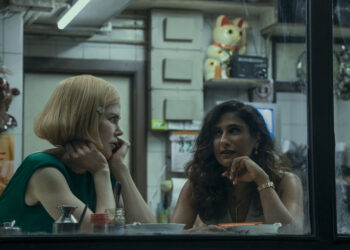This article is part of Mochi Magazine’s summer issue on Art — click here to read the rest of the issue.
I always hear iterations of “jeogi-yo” (an interjection used to grab someone’s attention) cutting through the stalls when I visit the sprawling Gwangjang Market, a well-frequented street market in South Korea. When said aloud, that phrase seems to roll off the tongue quite easily, yet it always rises above the mass of market-goers and is, therefore, surprisingly effective in its intention. It is also linguistically reflective of a culture that thrives off such interjections as a way to verbalize the nuances of feelings that are often unable to be put into words.
“Ai-goo-ya …,” the lady manning the hotteok stand sighs when a little girl drops the fresh hotteok that her father had just gotten for her.
“Ya!” I hear the girl’s father exclaim in disbelief, throwing his hands up in the air.
Scanning the center aisle of the market, I witness a plethora of not only food but also expressions, some vocally more dramatic than others. On one end, a group of college friends sit around a plate of steaming tteokbokki and clink together shot glasses overflowing with soju. “Jjan!”
On the other end, a couple argues over a jacket that the husband has purchased. “Jagiya,” the wife endearingly calls her husband, admitting defeat, and approaches him again after ostensibly cooling off.
What all of the instances above have in common is the broader participation in a rhetorically expressive culture, within which language (as a mode of expression) and tradition are inextricably tied. Language itself, regardless of the language, is universal.
When considering the impact of art on society, I think of Eisenhower’s age-old adage, “Art is a universal language and through it each nation makes its own unique contribution to the culture of mankind.” This is true with most visual forms of art and even with some forms of multimedia. Paintings, photographs, and…
Read the full article here




